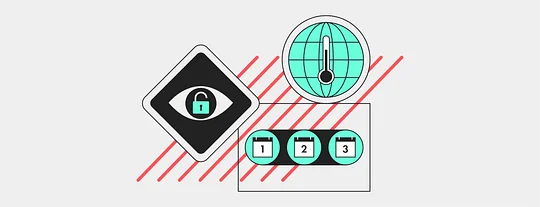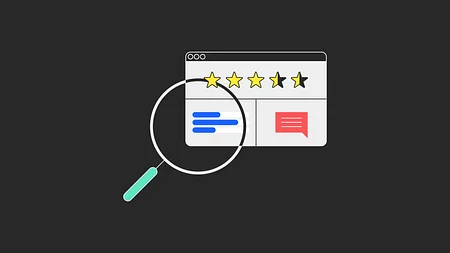The 5 biggest UX challenges for fintechs in 2022

As we begin 2022, we’re looking forward to seeing some innovative solutions in the fintech space, but there will be roadblocks along the way.
Let’s take a look at the five biggest UX challenges facing financial services in 2022.
Adopting green fintech
We’ve reached an important moment in time. Our actions have a huge impact on the climate and we’re inching closer and closer to a global temperature rise of 1.5 degrees within the next couple of decades.
That’s why it’s so important that we find green solutions in financial services now. This could mean more investment in green and sustainable solutions and away from fossil fuels.
Things are starting to move in the right direction. New green fintechs are entering the scene and existing companies are offering new green products. Recently, Wealthsimple launched a green ETF that will help finance wind and solar projects.
But there’s still a long way to go. Given how well-placed fintechs are to help address environmental issues, they need to play their part. But it takes more than a few players to make a positive change and that’s why this move continues to be a challenge.
Given how well-placed fintechs are to help address environmental issues, they need to play their part.
It may seem surprising but UX can play a key role in reducing carbon emissions. Using technology involves data centres, servers, routers, storage systems and electricity – all of which adds to air, land and water pollution. Opening just one website can emit 1.76g of CO2. And when you have 10,000 visits a month, we’re looking at a huge emission of 211kg of CO2 annually. To put that into perspective, it’s enough energy to power an electric car and drive almost 3,000km.
What’s worrying is that there are 5.1bn daily internet users, so you can imagine how energy-intensive this is. That’s why it’s so important from an environmental perspective that UX designers focus on streamlining the user journey so that users can complete their desired actions as quickly as possible with the least amount of energy used.
Ensuring data is secure
As biometric technology has become more and more sophisticated, it’s easier than ever for users to access their banking and finance apps within seconds. This raises the problem of virtual security. Touch ID and Face ID make it easy for the user to log in, but present cybercriminals with an opportunity.
It’s a rare occurrence but not uncommon. Last month, a man made headlines after stealing thousands of dollars by lifting his girlfriend’s eyelids while she slept for facial recognition to open her banking app. There have even been stories of facial recognition systems being tricked by a picture of the owner.
It’s in financial providers’ interests to do all they can to protect their users’ data and this means staying ahead of cybercriminals with technology. While Touch and Face ID represent big leaps forward in intuitive design, measures need to be taken to ensure they don’t open the door for a wave of cybercrime.
The Web3 world
Blockchain technology can be a total game changer for improving data exchange and building trust in the industry. Transactions can be tracked each step of the way, and accountability and receipts prevent fraudulent situations like the Wirecard scandal in 2020.
Blockchain technology can be a total game changer for improving data exchange and building trust in the industry.
But companies face an additional challenge with the onset of Web3. The way we interact with online services is about to change, and it’ll be interesting to see how fintech copes. The success of the onboarding process hinges on great UX design to a large extent.
This is no more evident than in the crypto world. With 2.3m adults in the UK holding assets last year, it’s high time for regulation. UX designers can play a massive role in preventing exploitation, too. There is lots of room here for UX to redefine user experiences in crypto, leaning on the ever-evolving technologies underpinning it and the changing customer behaviours it brings.
Not to mention education. Are users fully up to speed with trading crypto while they are browsing a crypto app? How can the UX be improved in a way that educates users about trading crypto? These are problems the industry needs to navigate.
Being transparent with BNPL
Last year was a big year for Buy Now Pay Later (BNPL) with huge acquisitions and large fundraising rounds.
The UX of splitting payments at the checkout is so seamless that 39% of users have done so without realising it. Of users that do realise, 42% don’t fully grasp what they’re signing up for, according to Citizens Advice.
What’s really worrying is that 41% of users have struggled to make repayments and half of BNPL users are already in debt.
As a result of this, enquiries were launched in many regions and regulators have been working on trying to prevent consumer abuse and exploitation. Actions taken include improving labelling and providing more clarity on credit impacts.
Again, this is a great start, but there will still be challenges in regulating this new area of fintech. Especially when UX design has been so important in growing this space in the first place. We should also really consider the ethics around whether we want to make the UX so seamless and smooth that users take out loans that might put them in a difficult position later.
Preventing financial exclusion
Open Banking has made it easier for individuals to access credit. However, there are still challenges around financial exclusion.
We need to consider that not every person is technically savvy or financially literate, and this can cause financial exclusion. For example, the closure of bank branches has left 100,000s of older people without access to basic banking services.
We need to consider that not every person is technically savvy or financially literate, and this can cause financial exclusion.
Accessibility is another challenge, especially as financial services moves towards digital solutions. In the UK, there are 14.1m users with a disability affecting their access to banking services. In a recent Which? survey, around one in 10 customers with a disability said that they find it fairly or very difficult to navigate their bank’s website (12%) and mobile banking apps (11%). This is another challenge that the industry needs to take into account this year.
So those are the main UX challenges facing the financial services industry this year. We have high hopes that these challenges will be faced head on with the needs of the customer and planet in mind. If you enjoyed this article, download the 11:FS Pulse report. It’s full of great insight on the best UX of 2021 and which fintech trends to keep an eye on this year.
11:FS Pulse
See how you stack up against your competitors with 11:FS Pulse, our library of best-in-class user journeys from more than 600 global banks and fintechs. Book a demo today.
Get a demo



